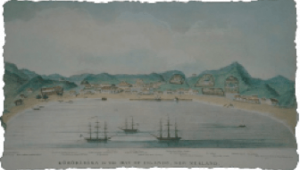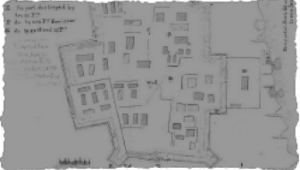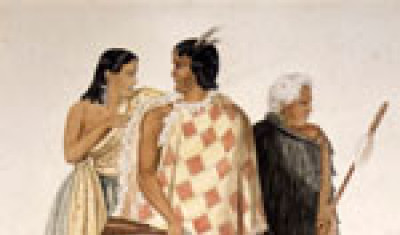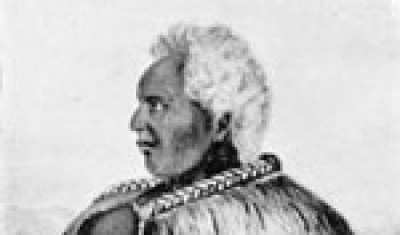
The "Musket Wars"



The Musket Wars was a period of ferocious Māori versus Māori conflict which spread across much of the country during the early decades of the 19th century. It is difficult to know for sure but perhaps 20,000 people were killed.1 To put it in perspective, more New Zealanders were killed during the Musket Wars than during World War One.
The “Musket Wars” name is somewhat misleading. The bloodiest period of conflict in New Zealand history cannot be dismissed as a simple consequence of selling guns to the “natives”. Reality, as usual, was much more complicated. In a nutshell, it happened because European contact tipped the system out of kilter. The inbuilt checks and balances could not accommodate the scale of economic, political and technological change. Ambitious and opportunistic leaders took the concept of utu to new extremes, sparking a chain reaction of violence and upheaval, which spread across the country.
These wars were an extension of traditional Māori warfare, arising from the political dynamics of the time. Ngāpuhi were the first to obtain muskets, and they used them to settle scores against their enemies of old. From 1818 numerous war parties departed from the Bay of Islands and headed south, intimidating and conquering their enemies, and taking many prisoners. Ngāpuhi Chief Hongi Hika was an influential character, with an extraordinary ability to unite different factions of Ngāpuhi. He assembled huge armies (by the standards of the day), provided them with muskets, and went to war against Te Arawa and the people of the Waikato. Much slaughter ensued.
When Māori began to obtain muskets the scale of traditional warfare was altered, causing far greater devastation and disruption than before. Simply put, more people were killed. Utu required death to repay death, and so the cycle of violence escalated. The old systems for avoiding warfare – diplomacy, ritual encounters, and property confiscation – were insufficient. The power of tikanga to constrain and restrain the violence was diminished. Facing destruction, many hapu were forced from their lands. Migrations of defeated hapu were not unusual in Māori society, but the scale of the upheaval was quite unprecedented. Forty major migrations were set in motion,2 and vast tracts of land were temporarily abandoned.
Ngāpuhi had a monopoly on muskets for a few years, but after 1820 other iwi began to catch up. By the mid-1820s the chiefs to the south were able to fight of Ngāpuhi invaders. After Hongi Hika died in 1828, the Ngāpuhi confederation began to fall apart and the hapu began to fight among themselves. Ngāpuhi was no longer a united fighting force. The Musket Wars didn’t really end until the late 1830s, by which time many Māori were physically and emotionally drained, and basically tired of fighting. Everybody had muskets by then, and so a tenuous new balance of power was established.
The Musket Wars wound down only a few years before New Zealand officially became a British colony. Post-1840 Ngāpuhi politics cannot be divorced form the events of the Musket Wars period. Ngāpuhi hapu were briefly united under Hongi Hika, but after his death the alliances fell apart. Offences were committed and remembered and political divisions widened. In 1845-6 Ngāpuhi hapu were again at war, and this time there was a third party involved: the British Government. On a philosophical level Te Ruki Kawiti and Hone Heke were fighting two separate wars, one against the British and another rooted in the complicated Ngāpuhi politics of the previous decades.





